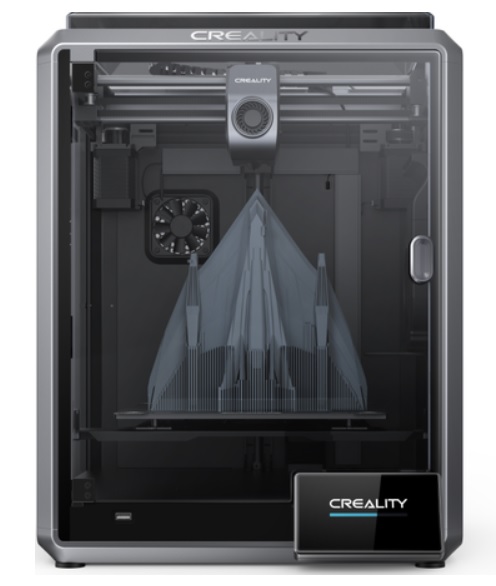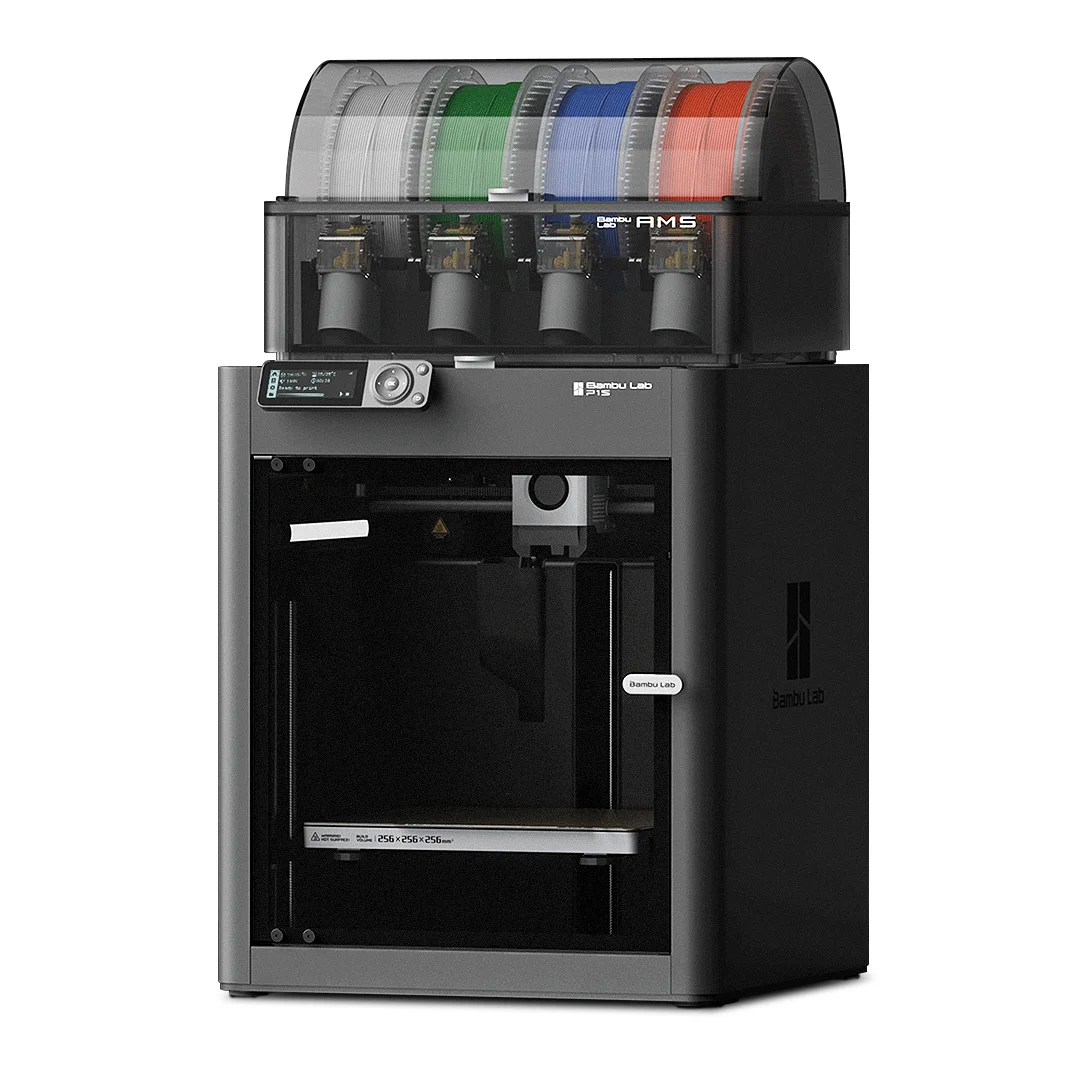Compare K1C vs P1S
Comparison between the best 3D printers
Choose the best 3D printer at the best price. The cheapest 3D printers are here.
Buy a 3D printer here with 3D Fila.
 |
 |
|
| Model | K1C[BUY K1C] |
P1S[BUY P1S] |
| Printing Material | Filament | Filament |
| Buy Filament for Creality 3D K1C | Buy Filament forBambu Lab P1S | |
| Estimated price | $449,00 | $949,00 |
| Manufacturer | Creality 3D | Bambu Lab |
| Release Year | 2024 | 2023 |
| Print Volume [mm] | 220x220x250 | 256x256x256 |
| Printer Size [mm] | 355x355x480 | 389x389x458 |
| Weight [kg] | 12,4 | 12,95 |
| Power Loss Recovery | YES | YES |
| Enclosed printer | YES | YES |
| Bed Leveling | Automatic | Automatic |
| Filament End Sensor | YES | YES |
| Bed type | Heated | Heated |
| Power supply system | Direct Drive | Direct Drive |
| Standard nozzle | 0,4 | 0,4 |
| Maximum Nozzle Temperature [°C] | 300 | 300 |
| Maximum Bed Temperature [°C] | 120 | 100 |
| Maximum printing speed [mm/s] | 600 | 500 |
| Filament holder | YES | YES |
| Camera for supervision | YES | YES |
| Recommended filaments | ABS, PLA, PETG, PET, TPU, PA, ABS, ASA, PC, PLA-CF, PA-CF, PET-CF | PLA, PETG, TPU, PVA, PA, PA-CF, Nylon, PC |
| Recommended slicers | Creality Print; Cura, Simplify3D e PrusaSlicer | Bambu Studio, Super Slicer, Cura, Prusa Slicer, Orca |
| Maximum Resolution [mm] | 0,1 | 0,1 |
| Processor | Quad ARM A7 1.2 GHz | |
| Display | Display touchscreen 4,3'' | Touchscreen 5'' |
| Power Supply | 110/220V / 350W | 350 W |
| Connectivity | Ethernet / USB / Wi-Fi | Wifi, Bambu bus, Cartão SD |
| Operating systems | Windows, Mac, Linux | Windows, Linux, Macbook |
| Date of registration in the system | 2024-05-16 | 2024-04-11 |
| Release date | 2024 | 2023 |
| Extra features | The Creality K1C is a fully enclosed CoreXY 3D printer featuring an all-metal extruder, tri-metal Unicorn nozzle for abrasive materials, automatic bed leveling with nozzle cleaning, AI-assisted failure detection, built-in camera for timelapse, enhanced cooling system, root access to Klipper firmware, and compatibility with PLA-CF, PA-CF, PET-CF, TPU, ABS, and more. | The Bambu Lab P1S stands out for its out-of-the-box practicality, eliminating the need for manual adjustments with automatic calibrations such as bed leveling and vibration compensation. It features multicolor printing capability through the AMS system, allowing up to 16 colors when connecting four AMS units. With an advanced control algorithm, the P1S offers fast printing speeds without sacrificing quality. Equipped with modern features such as filament end sensor, semi-automatic belt tension, direct extruder, welded frame and all-metal hotend, along with a fully enclosed chamber, the P1S promotes a superior printing experience, supporting a wide range of materials. |
| Support for multiple colors and materials (AMS and CFS) | NO | YES |
Notes * |
||
| Cost-benefit | 8 / 10 | 7 / 10 |
| Hardware | 5.4 / 10 | 6.4 / 10 |
| Tela | . | . |
| Print volume | 3 / 10 | 4 / 10 |
| Performance | 5 / 10 | 4 / 10 |
| [BUY K1C] | [BUY P1S] |
Conclusion |
| In comparing the Creality 3D K1C and the Bambu Lab P1S, several key factors emerge that highlight the strengths and weaknesses of each printer, ultimately guiding a decision based on specific needs and budget considerations. The Creality 3D K1C is a more budget-friendly option with a solid feature set. Its fully enclosed design and advanced features such as automatic bed leveling and AI-assisted failure detection make it an excellent choice for users prioritizing functionality and ease of use. With a decent print volume and maximum printing speed, it supports a variety of materials, which positions it well for hobbyists and small-scale projects. However, the K1C may fall short in terms of overall print volume and advanced multi-color capabilities. On the other hand, the Bambu Lab P1S, while more expensive, presents a more sophisticated framework for serious 3D printing. Its enhanced features, including multicolor printing capability via the AMS system and advanced control algorithms for fast yet quality printing, cater to users looking for versatility and precision. The P1S not only matches the K1C in essential functionalities like automatic bed leveling and a heated bed, but it also surpasses it in print volume and material support, making it suitable for more complex projects. In conclusion, the choice between the K1C and P1S ultimately hinges on budget constraints and specific printing requirements. The K1C offers excellent value for those entering the 3D printing realm, while the P1S provides advanced capabilities for users willing to invest more for superior performance and versatility. Buyers should assess their priorities—whether it be cost efficiency or advanced printing features—to determine which printer aligns best with their needs. |

